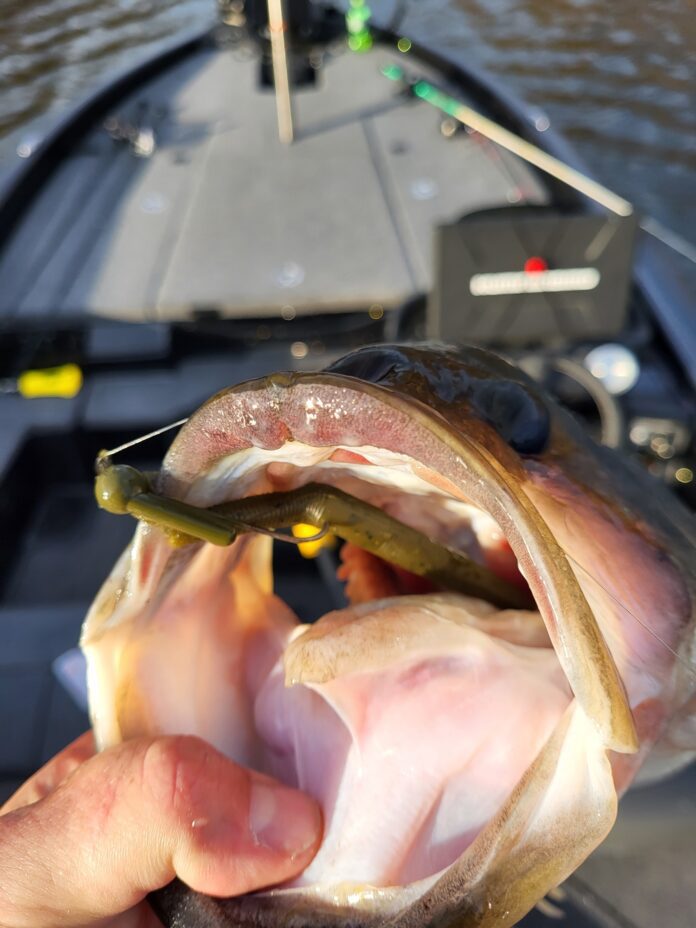Cracking the Code: How Rattling Shakey Heads Dominate
the Summer-to-Fall Transition
As summer fades into fall, the fishing game changes. It’s a time of transition—one that can
throw even the most seasoned anglers for a loop. Bass are moving from their summer hideouts into new patterns, and for many anglers, this in-between phase presents one of the year’s toughest fishing challenges. But here’s the silver lining: while bass may seem unpredictable, they’re also hungry. And during this seasonal shift, there’s one food source that bass can’t resist—crawfish. For savvy anglers, that’s where the magic of the rattling shakey head comes into play.
The Transition: Why It’s Tough
As the water cools, bass leave their deep summer homes and begin roaming the shallows,
preparing for their fall feeding frenzy. This sounds straightforward, but the reality is more
complicated. Bass often scatter across different depths and structures, making them harder to locate and even harder to catch. They aren’t yet chasing baitfish aggressively, which means traditional moving baits might not yield the results you’re hoping for. But there’s a solution: bass are starting to key in on crawfish—a slow-moving, high-protein meal that’s just begging to be devoured.
Crawfish: A Fall Staple for Bass
Why crawfish, you ask? Simple. As fall approaches, crawfish become more active, crawling
around rocky points, docks, and other hard structures where bass love to ambush them. For bass transitioning between summer and fall, these crustaceans offer a protein-packed meal that requires minimal effort to catch. And what better way to mimic this slow, easy target than with a shakey head rig?
The Secret Weapon: Shakey Heads with a Twist
Traditional shakey heads already excel at creating subtle presentations in tough conditions, but when paired with a rattle, they become even deadlier. Enter the Rattle Head by Drop Zone Tackle—a shakey head designed to mimic the sound and movement of a crawfish in its natural habitat. With a built-in rattle, this jig head draws attention from even the most reluctant bass, combining both noise and vibration to make your presentation irresistible.
Keys to Rattling Shakey Head Success
- Match the Hatch
The trick to success in the summer-to-fall transition is imitating what the bass are eating. Use soft plastics that resemble crawfish in color and action. Go for greens, browns, or darker colors with hints of red—anything that screams “crawfish.” A finesse worm or small creature bait will perfectly mimic that slow, deliberate movement crawfish make across the bottom. - The Right Weight for the Job
Choosing the right shakey head weight is crucial. In shallow, rocky areas, opt for a lighter head, usually a 3/16-ounce will do the trick. This allows your bait to slowly fall and maintain contact with the bottom, mimicking a crawfish’s natural movement. In deeper water, step up to a 1/4-ounce head to stay in the strike zone. - Make Some Noise
The rattling feature is what sets the Rattle Head apart. Crawfish create subtle clicking and clattering sounds as they move along the rocks, and bass are attuned to this noise. The Rattle Head mimics these sounds, drawing bass from further away and enticing them to investigate. Especially in stained or murky water, that extra noise can provoke reaction strikes that a silent bait won’t. - Add Some Flair
For an added twist, try bending the worm slightly before threading it onto the hook. This gives the bait a spiraling action as it sinks. The erratic fall, combined with the sound of the rattle, can rigger even the most lethargic bass to strike. - Patience Pays Off
This time of year, slower is better. After the bait hits the bottom, let it sit for a moment, then give it a few gentle shakes. This subtle action mimics a crawfish’s defensive posture, and often, bass will strike during these pauses. Watch your line closely—sometimes the bites are so light that you’ll only notice a slight twitch. - Focus on Structure
Rocky points, riprap, and hard-bottomed areas near deeper water are prime feeding grounds for bass targeting crawfish. By working your rattling shakey head through these hotspots, you increase your chances of running into aggressive feeders. - Fine-Tune Your Gear
A medium-light to medium spinning rod with a fast tip, paired with 8-10 lb fluorocarbon line, is your best bet. This setup offers the sensitivity to detect subtle bites and the strength to fight fish out of cover.
The Rattle Head Advantage: More Than Just Noise
The Rattle Head isn’t just another shakey head. It’s designed with precision to add sound and vibration to your presentation, setting it apart from standard rigs. During the summer-to-fall transition, when bass are hunting crawfish, this extra element of realism can be the difference between a tough day and a successful one. Offer for The Bass Cast Readers: - To help you get the most out of this tricky transition period, we’re offering a 20% discount on our Rattle Heads. Just head over to our website (RattleShot.com) here, add your Rattle Heads to the cart, and the discount will be automatically applied at checkout. This fall, give yourself the edge by using a tool specifically designed to turn tough conditions into big bites. The rattling shakey head may be your ticket to unlocking the potential of those hard-to-catch transition bass. Get out there, make some noise, and get ready to shake up the fishing world!

